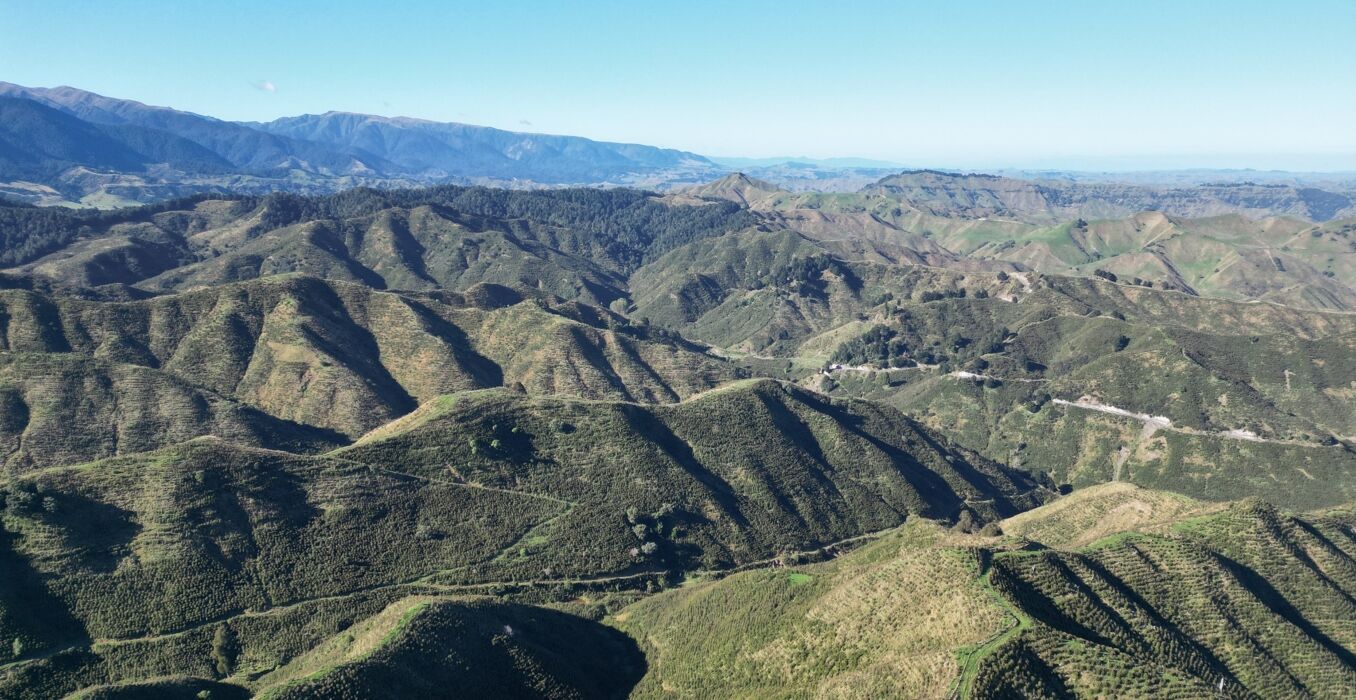
Rural -
Central North Island station set for sweet success
Makopua Station in central North Island is poised to prosper from a resurgent global mānuka honey market and income from increasing carbon credit production.
Beekeeper icon Don Tweeddale and his wife Thelma have overseen the eight-year transformation of their 1,657ha hill country station into one of the largest sources of high-grade mānuka honey in the country.
Now both aged in their seventies, they have decided to put it on the market and “retreat a little” from active management of their Tweeddale honey business, and let their children and grandchildren take over.
Don’s dream for Makopua Station, nestled against the Ruahine Forest Park south-east of Taihape, is coming to fruition after a tumultuous period for the honey sector in New Zealand.
Over his lifetime in beekeeping, Don has seen several ups and downs in the price for every type of honey Tweeddale Honey has produced over many decades of being in business.
He is confident the steady recovery in high Unique Mānuka Factor (UMF) honey prices underway globally will be sustained and hopes there will not be a repeat of the massive spike in prices which occurred in the late 2010s and led to an influx of opportunist beekeepers keen to cash in.
“The market is settling down nicely because the balance between supply and demand is returning. There are between 480,000 and 500,000 hives left out of close to a million hives when the (mānuka honey) boom was in full swing,” Don says.
“New markets are being developed for high UMF honey is the United States and Asia too, so the sale of Makopua Station lines up nicely.”
Their original concept for Makopua Station was to create a reliable, substantial source of high (20+) UMF honey built on early and later flowering cultivars of Mānuka.
“The whole idea was to plant mānuka with a range of flowering dates so we could spread the risk of the weather not playing a ball. With both early and late flowering trees, the risk of production being hit is reduced.”
“We started planting at Makopua more than eight years ago and planted 4.2 million mānuka plants on mostly Class 5 and 6 land that is erodible and produced minimal income from sheep and beef farming,” he says.
Most of the 1,417ha now planted was completed by contract planters from Fiji and Don says the project would never have gone ahead at the speed and scale achieved without the support of grants from the One Billion Trees initiative and the earlier Afforestation Grant Scheme.
Don says Makopua Station could be purchased outright, but his strong preference is for Tweeddale Honey to retain apiary rights to the honey production and provide a full bee management service in return for the owner receiving either a fixed payment per hive or a percentage of the honey earnings.
Bayleys national director rural Duncan Ross says the property is well tracked and supported with three houses, several farm buildings, woolsheds, yards and fencing from its earlier time as a number of sheep and beef farms and blocks which the Tweeddales bought and amalgamated.
A key feature of the property is its layout which features six major hive sites, located for maximum honey production, accessed from mostly metalled tracks and all within easy reach of Makopua Road which runs through the middle of the station.
The mānuka trees are still maturing, but Tweeddale Honey is forecasting Makopua Station could be stocked with up to 1,600 hives within the next year or two, delivering annual production of up to 55 tonnes of high-grade UMF mānuka honey.
The market for bulk mānuka honey has recovered to between $40-$50/kg, suggesting scope to generate more than $2.5 million of revenue.
Ross says just under 766ha of the planted area is registered with the Emissions Trading Scheme (ETS) and a further 652ha, planted with assistance from the former the Afforestation Grant Scheme, can be registered in the ETS 10 years after it was planted. With another 85ha of existing native bush, the canopy area totals 1,502ha.
At the current market price for NZ carbon credits units, the ETS could generate income upwards of $800,000 per annum in the peak years of carbon credit entitlement.
A further 149ha is a mix of open grazing land, tracks and infrastructure areas.
A lease arrangement to graze in-lamb ewes from June till weaning in early summer has delivered a further $27,000 per annum but may diminish as the planted area reaches maturity and reduces the station’s grazing capacity.
Ross says the property is being marketed internationally because of the global interest in mānuka honey and its appeal as a standalone investment which ticks many of the environmental, social and governance requirements expected of consumer-focused companies today.
Viewing is strictly by appointment only and tenders close on April 24, 2025.
For more information, contact Duncan Ross on 021 663 567 or email duncan.ross@bayleys.co.nz